Search Posts
Recent Posts
- Rhode Island Weather for April 28, 2024 – John Donnelly April 28, 2024
- The Promised Land: a short story by Michael Fine April 28, 2024
- Ask Chef Walter: Gnocchi with Pesto lesson – Chef Walter Potenza April 28, 2024
- Newport Flower Show to celebrate flowers and horticulture with “At Home” theme April 28, 2024
- Gimme’ Shelter: Buddy, here! – at Rhode Home Rescue April 28, 2024
Categories
Subscribe!
Thanks for subscribing! Please check your email for further instructions.
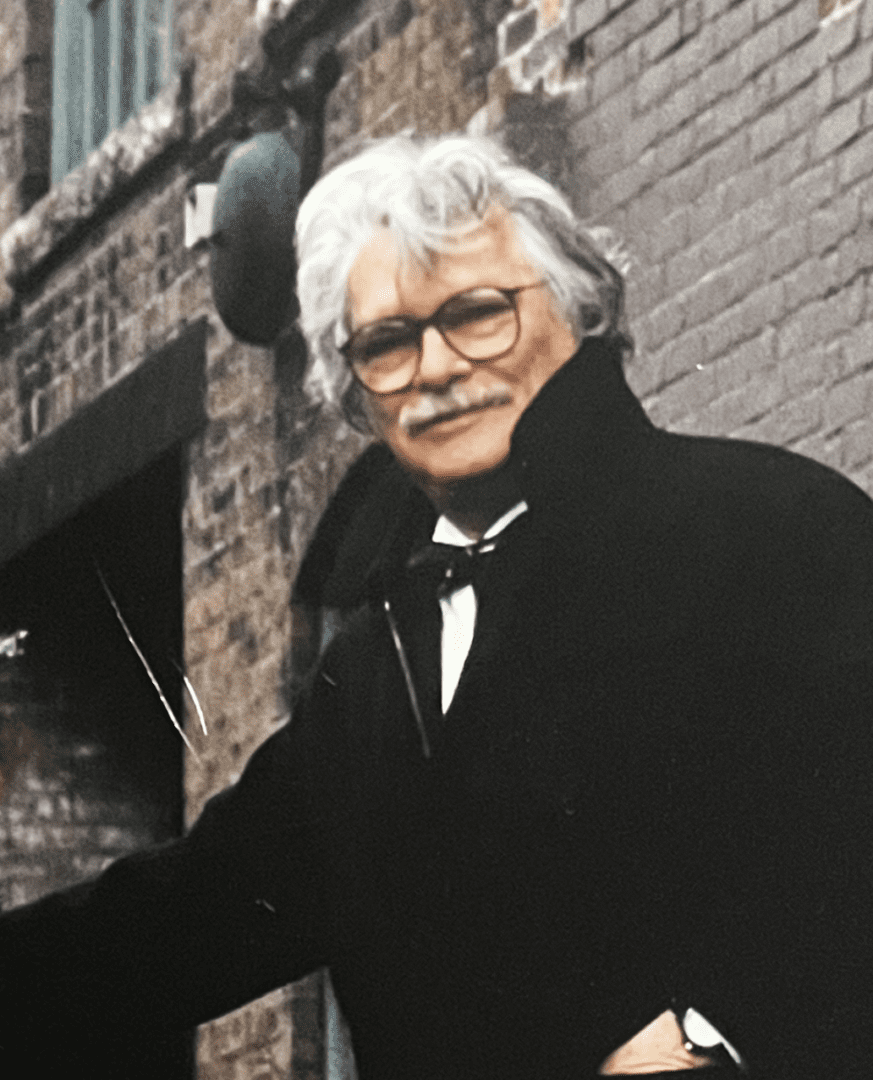
Passages – Life and Times of Morris Nathanson
By Herb Weiss and Phyllis Van Orden Nathanson
Painter, Illustrator and Restaurant/Hospitality Designer Morris Nathanson’s artist studio is just a stone’s throw away from his childhood home on Japonica Street in Pawtucket, Rhode Island. Growing up poor during the depression in his Pleasant View neighborhood, settled by Armenian and Syrian immigrants who worked in the surrounding mills, he would see his home and surrounding properties demolished to make way for Interstate 95. This made him skeptical of the policy of Eminent Domain, as it left his family and neighborhood languishing for years in expected dread of demolition, years before it was to occur, destroying the spirit of his neighborhood. It was this singular policy that encouraged his work in historic preservation.
Morris, raised in a Jewish household, was a lifelong adult member of Temple Beth El on Providence’s East Side. He practiced his faith throughout his life including the orthodox values taught to him by his mother.
Morris, a spitting image of Mark Twain, or maybe even Albert Einstein, because of his distinctive head of hair, always wore colorful bow ties, considered by many to be his trademark look. He was a man who made a definitive impact on the international art and design scene. In the City of Pawtucket, he was the force that initiated the City’s art scene by bringing the strategy of adaptive reuse of underutilized and vacant mills to city officials, a concept he learned from his years of working in New York City as a restaurant designer and watching the development and transformation of the industrial mill buildings in SOHO.
My friend, Morris, passed away peacefully at the ripe old age of 95 in September, one year ago.
Over two decades, this writer would visit Morris on Saturday afternoons sitting in his living room drinking cups of freshly brewed coffee. The cozy room is surrounded by large bookcases jam packed with literary classics, architectural, art and design books, and walls filled with artwork he created throughout the years, and of course the piles of newspapers, specifically the New York Times, Boston Globe and Providence Journal, that he read daily. We would talk about Pawtucket, world events, and he would reminiscence about his amazing life’s journey from his childhood in Pawtucket, to the international world he lived in later in his life.
The War Years
Morris was motivated to enlist in the military service because of the Nazi’s policy of exterminating all Jews. His family was aware that they lost many of their relatives in Europe as they were transported to the concentration camps where they perished.
Walking into the Pawtucket post office on Montgomery Street, registering for the draft at age 17, with the required parental approval to enlist in the Navy, he, like many young boys, left Pawtucket East to fight in World War II.
This memory never faded from his mind.
After his basic training at Sampson Naval Base in upstate New York, half of his class of Navy recruits were assigned to the U.S.S. Catamount (LSD 17) and the other half were sent to the U.S.S. Indianapolis. The U.S.S. Indianapolis was a Portland-class heavy cruiser which was charged with a top-secret mission – to deliver the uranium and other components for “Little Boy,” the first nuclear weapon to be used in combat, to Tinian Naval Base. The bomb would be dropped on Hiroshima the following week. After the ship’s departure to the Philippines for training duty, it was sunk by a Japanese submarine. Sinking in just 12 minutes. Out of the 1,195 crewmen onboard, only 316 survived. The survivors faced injuries, dehydration, and shark attacks. It was the luck of the draw for Morris to be assigned to serve on U.S.S. Catamount, and not the U.S.S. Indianapolis.
Morris remembered the U.S.S. Catamount among hundreds of naval ships in Tokyo Bay, carrying special equipment to be used during the occupation of Japan. His ship would ultimately not have to participate in the all-out ground invasion of Japan because of the dropping of the atomic bombs on Hiroshima and Nagasaki. His ship was one of 260 vessels of the Allied navies present in Tokyo Bay when Japanese officials on the U.S.S. Missouri signed the declaration of surrender on Sept. 2, 1945.
With Japan’s surrender, the members of Morris’ crew were sent on shore to rout out any Japanese soldiers hiding in caves. A terrifying moment for Morris occurred in the caves, not from meeting enemy soldiers, but realizing he was lost and he couldn’t read the signage written in Japanese. Fortunately, fate smiled on Morris and brought him out to safety.
On a light note, during his Naval service Morris was recognized by his crewmates for his artistic talent. He was always selected to do any assignments involving illustrations. His favorite project was designing Mother’s Day cards for his shipmates.
Fighting Antisemitism and Civil Rights for All
Experience aboard the U.S.S. Catamount gave this young medic his first awareness of systemic racism. Witnessing first hand man’s biases and prejudices motivated him throughout seventy-five years of his long life to fight for the equal rights of all. Morris’s civil rights activism solidified his belief that human rights are essential to life and recognized that they must be consistently fought for. Which he did.
Morris participated in the Freedom Rides of 1961, Dr. Martin Luther King’s campaigns in Selma and Birmingham, Alabama, and the March on Washington for Jobs and Freedom. For anyone not familiar with the dangers and complexities of these marches – these courageous civil rights activists were subjected to threats, beatings, mass arrests, bombings and even murder. Our criminal justice system in the 60s more often than not, turned a blind eye to the plight of those protesting against these injustices.
When Morris was discharged in 1945, like so many servicemen, he took advantage of the GI Bill, enrolling at Curry College in downtown Boston. During his second year, with his best friend, Donnie Shear, they began to seek out Colleges, “anywhere warm” he would say. They ultimately transferred to University of Miami.
At the University of Miami, he earned a Bachelor of Arts (BA) in Theatre and Fine Arts. He was a member of Alpha Epsilon Pi, a Jewish fraternity on campus. He later went on to the New School for Social Research in New York City to study Theatre. At that time, he wanted to become a playwright and director for the New York stage but fate would bring him back to Rhode Island with a call from his mother asking him to return to help her provide for his younger siblings.
Finding a Niche in the Design Sector
Ultimately, the young college graduate took his first job as a social worker in Providence. Morris worked for two years in the Charles Street neighborhood assisting struggling Italian families and although his supervisor offered to send him to graduate school in Boston to get a Bachelor of Social Work degree, he instead decided to follow his dreams and passion (suggested by his high school teachers) to become an artist.
Rhode Island would be pivotal to Morris by guiding him into his new profession. His first design job, sort of like a one degree of separation, began when his brother Abe decided not to accept a job offered by the Providence-based Paramount Restaurant Supply Co. When Morris heard this news, he went and applied for the job the next day and got it. This job officially propelled him into the restaurant design sector, working with the best, David Friedman, owner of Paramount Restaurant Supply Co.
Friedman had one of the largest design shops on the East Coast. The company designed case goods for numerous department stores in New York City, which had luncheonettes and restaurants. Interesting enough, Morris’ first designs were drawn on paper napkins in front of his new clients. However, that was very short lived as Morris immediately undertook developing a serious design department.
At age 24, Morris, head of the design team at Paramount, developed and designed the first franchise in American history, Dunkin Donuts. While working with Friedman he also designed restaurants in the pavilions of the 1964 World’s Fair in Flushing Meadows, New York.
When Morris left Paramount Restaurant Supply Co, he retained his relationship with Friedman which became a lifelong friendship. His artistic flair and design talents were brought out in his new company, Morris Nathanson Design, ultimately attracting clients throughout Rhode Island, the U.S., and later, internationally.
His most notable design projects locally include Hemenway’s, Ruth Chris Steak House, 22 Bowen, restaurants and bars for the Inn at Castle Hill, Capital Grill, Pizzeria Uno, Joe’s American Bar & Grill, Mills Tavern, Waterman Grill, Red Stripe and for those who still remember, the beloved Ming Garden and McGarry’s Restaurant in downtown Providence. He also had clients in the legal, medical and retail sectors.
Well-known clients outside the Ocean State included Nathan’s Famous, B.B. King Blues Club, Carmine’s, Docks, Rue 57, Oceana, Virgil’s and Angelo and Maxie’s in Manhattan and the Hyde Park, New York-based Eveready Diner featured on the Food Network’s “Diners, Drive-in and Dives” television series. Another accolade for the Eveready Diner is the 1995 visit of President Clinton and Russian President Boris Yeltsin to the diner for a meal during their summit held at the summer cottage of Franklin Delano Roosevelt, whose property is across the street from the diner.
Morris was also instrumental in the ongoing development of Johnson & Wales University. School leaders asked him to visit the renowned chef, Louis Szathmary, owner of The Bakery, in Chicago and a New York Times best-selling cookbook author, “The Chefs Secret Cookbook,” to review his extensive culinary collection which filled two Brownstones in Chicago. Morris persuaded Szathmary to donate his entire collection of culinary memorabilia to Johnson & Wales University and convinced the University to build a museum to house thousands of the historic artifacts that he so graciously donated.
An Early Advocate for Mill Adaptive Reuse
Morris did not forget or leave his old Pawtucket neighborhood. With his offices in Providence, he would later return to his roots in the blue-collar community of Pawtucket and purchase the decaying Rhode Island Cardboard Manufacturing complex, now known as Blackstone Studios, just across the street from his former high school, East High, now Tolman High.
Morris’s historic mill sits by Pawtucket’s Veterans Memorial Amphitheatre, an outdoor music venue he designed at Roosevelt and Exchange Street. Then the Exchange Street Bridge was later renamed the Morris Nathanson Bridge in his honor in 2010.
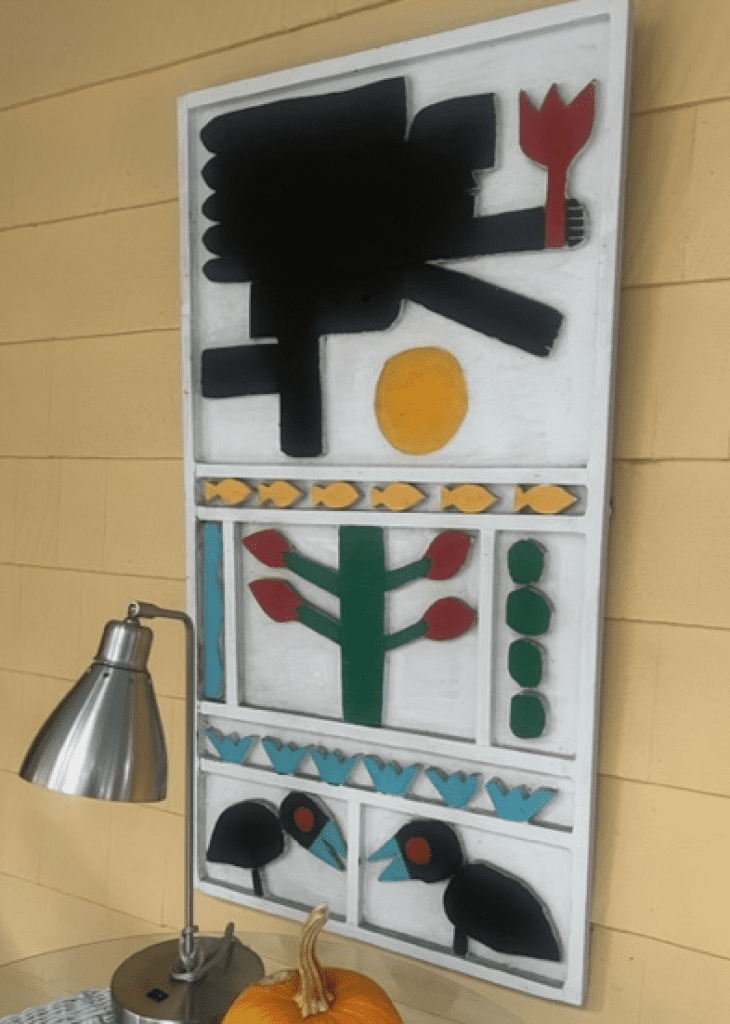
Over the years, Morris and his wife Phyllis renovated the former manufacturing mill building (ultimately located in Pawtucket’s 307-acre Arts and Entertainment District) to become the new headquarters of Morris Nathanson Design and also created artist studios and lofts, gathering a community of artists to live and work. These artists and craft persons, residing in his mill, would become independent contractors of his design firm and would be hired to work with his company on many restaurant design projects. His clients loved this concept because it made it easy to manage all their design needs in one building.
With the experiences learned in redeveloping their mill, Morris and his wife, Phyllis, took on developing the former Lebanon Knitting Mill and Vesta Underwear which sat on the banks of the Blackstone River. The project is now known as Riverfront Lofts which houses 59 live-work condominiums for artists. The success of this project was unrivaled in the state.
The Nathansons were leaders encouraging other artists to rehabilitate vacant buildings throughout Pawtucket and statewide. As an early advocate for mill adaptive reuse, Morris was in the forefront of developing Pawtucket as a highly visible and respected arts and entertainment center. He led the efforts in the blue-collar community to change to zoning ordinances (locally and statewide) to assist developers to rehab vacant and underutilized mills to allow live-work spaces.
While residing in Rhode Island, Morris has lived his life on the international stage as a designer of award-winning restaurants, concert spaces, and hospitality venues. He was widely recognized as the father of modern restaurant and hospitality design.
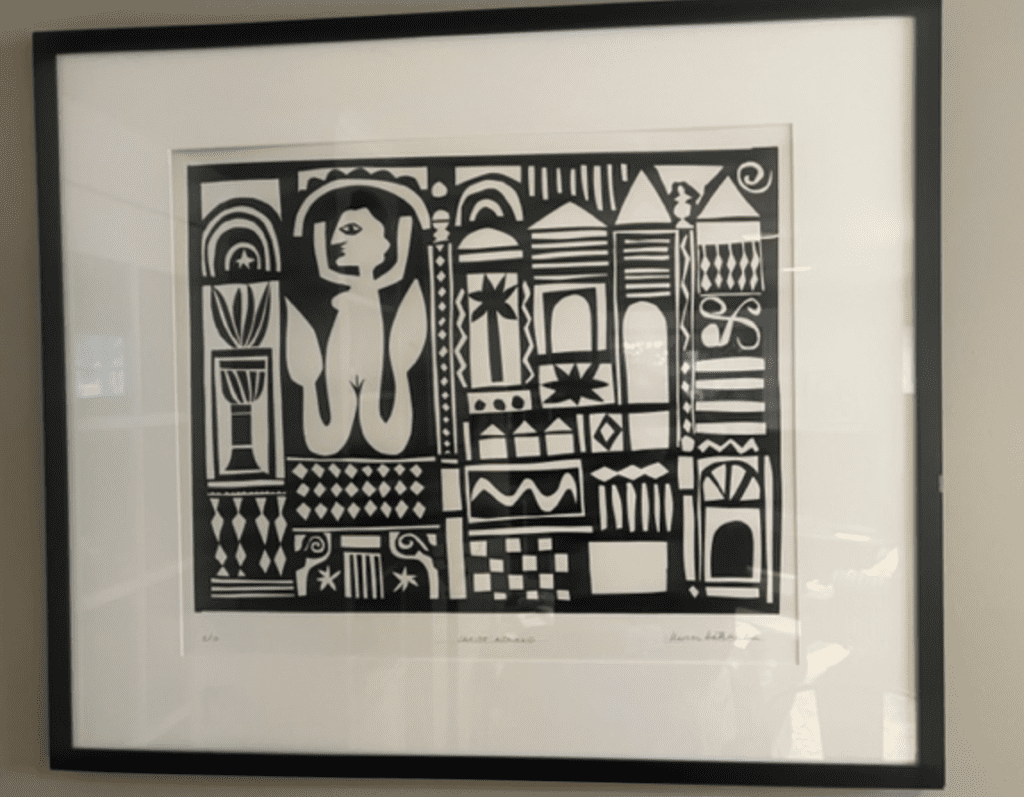
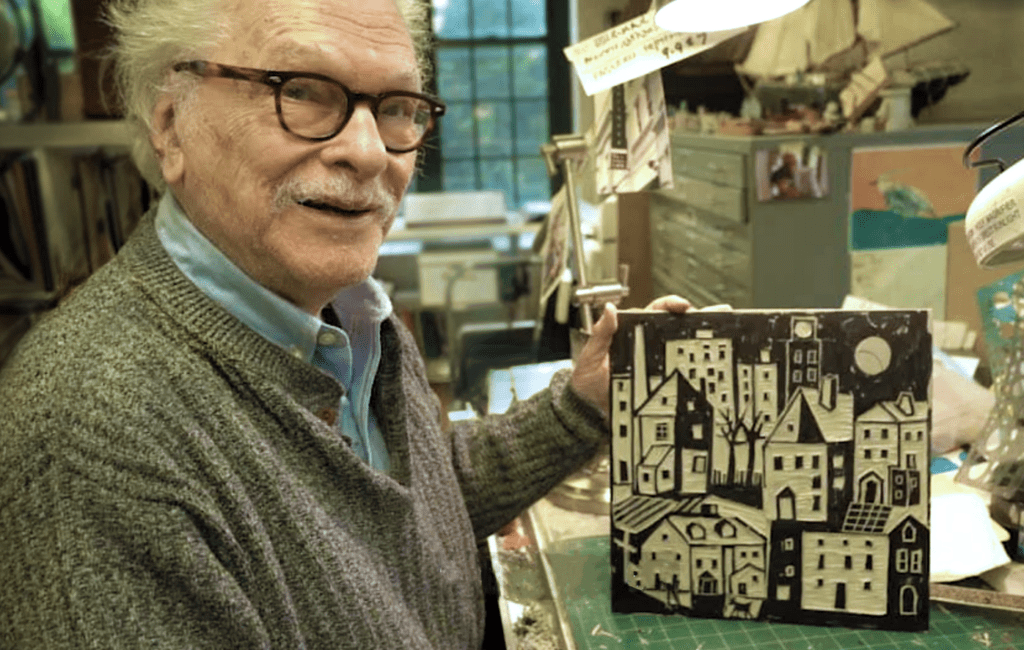
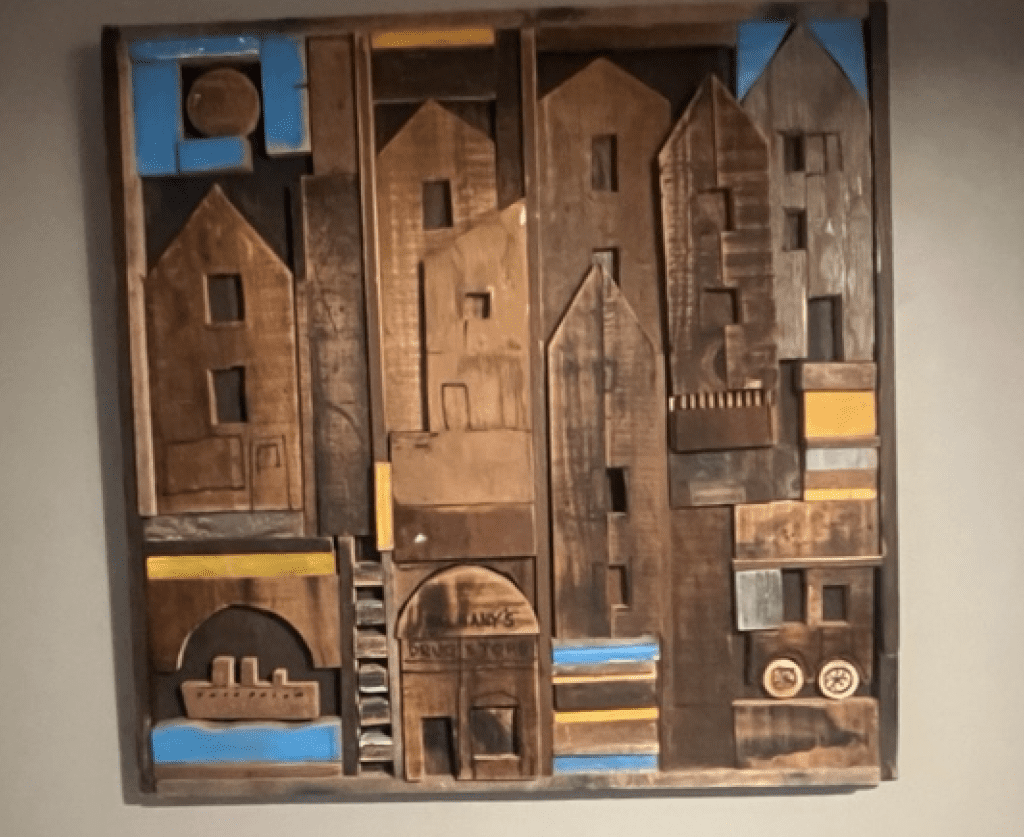
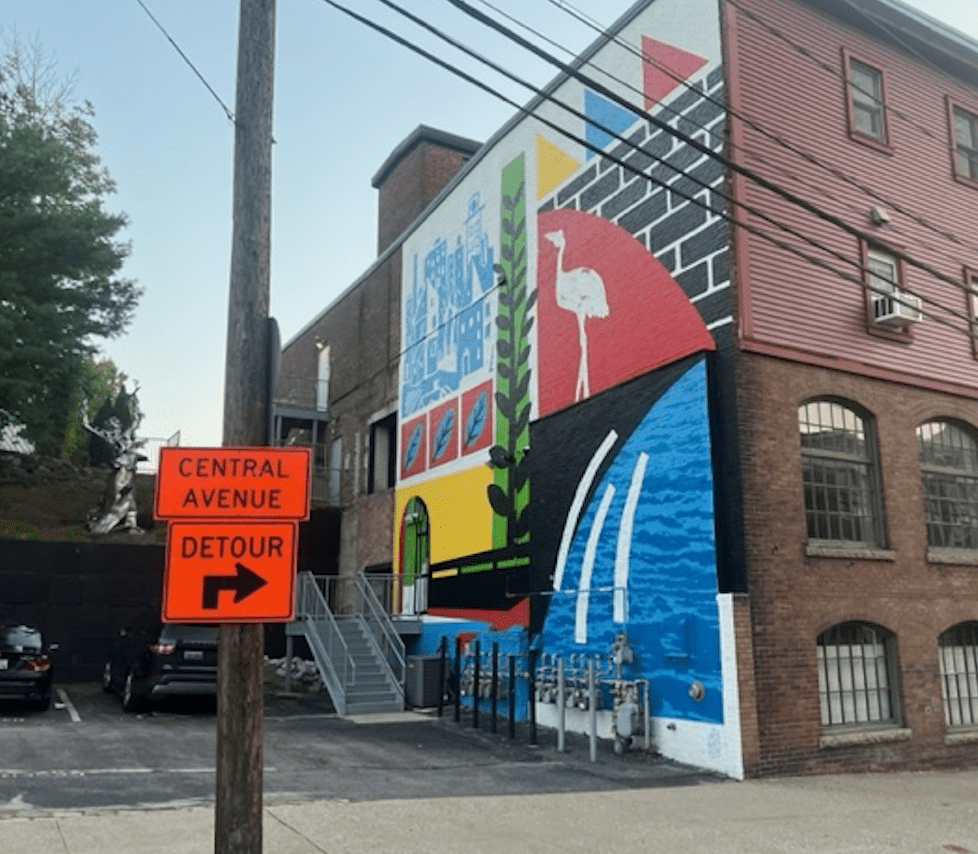
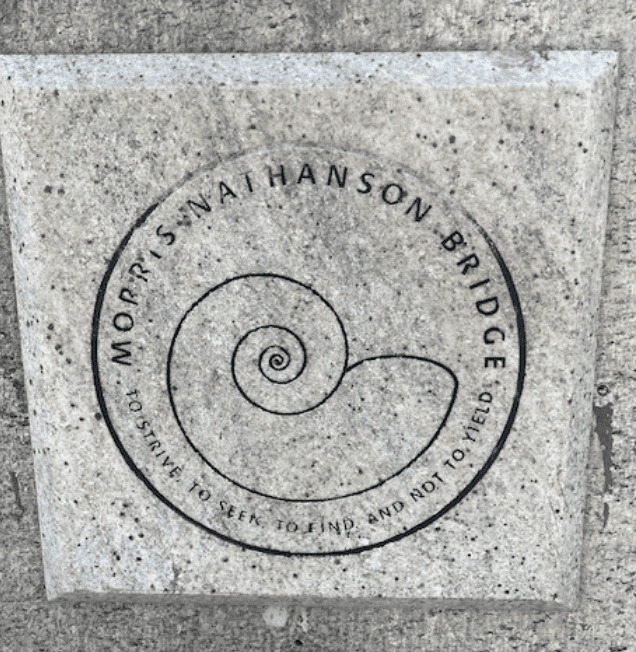
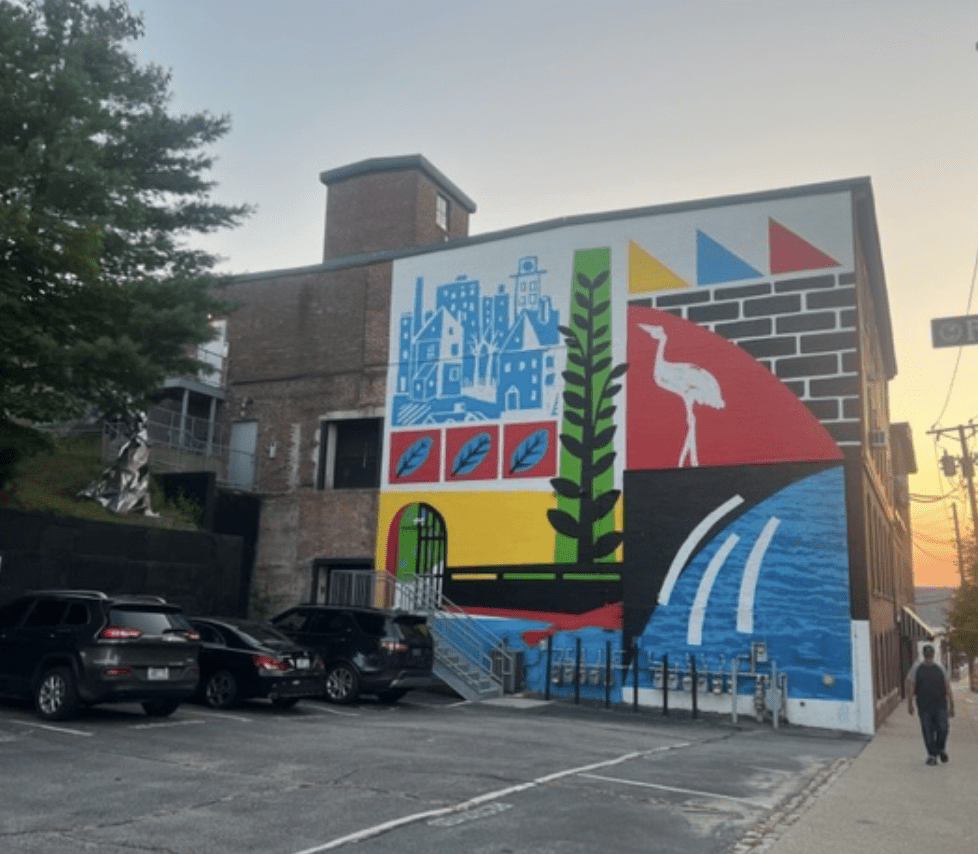
A Prolific Fine Artist Who Made a Difference
A lifetime member of the Providence Art Club, Morris was a highly respected and prolific fine artist, with numerous exhibitions in Providence and New York. The Pawtucket native’s paintings, prints, wood sculptures, and drawings reflect nearly a century of work, and trace his truly extraordinary and vibrant life through bold colors and iconography that pulled from personal history.
Mr. Nathanson was a founding board member of Trinity Repertory Company. One of Trinity Rep’s earliest set designers, he was also in charge of its relocation to the Emery’s Majestic Theater (now the Lederer Theater Center), which has been the theater’s home for over 50 years.
Among his many activities in Rhode Island, Morris served as a member of the Providence Historic Commission and the Pawtucket Armory Association, he played a critical role in securing the historic armory from the State of Rhode Island and oversaw the design and build of the Sandra Feinstein Gamm Theatre and the creation the Jacqueline Walsh School for the Arts. He also offered his time and expertise to the City of Pawtucket’s Riverfront Commission, the Pawtucket 2020 Committee, the Pawtucket Foundation, and the Pawtucket Arts Collaborative.
Morris also found time to design and teach courses at the Rhode Island School of Design, and served as a design consultant to Providence Mayor Joseph Paolino Jr. He also served as a commissioner under the direction of Antoinette Downing on the Providence Historic Commission.
Morris is the recipient of numerous personal awards and recognitions, including honorary doctorates from Johnson & Wales University and Rhode Island College. Morris has been inducted into the Pawtucket Hall of Fame, and been awarded the Pawtucket Foundation Heritage Award, the Arts and Business Council of Rhode Island’s Small Business Award, and the Pell Award from the Trinity Repertory Company for his life-time contribution to the arts. He was awarded the Paul Harris Award, Rotary’s highest honor by the Pawtucket Rotary Club.
Morris has also been designated as a ‘Thought Leader’ by the American Society of Interior Designers, considered to be the best in the design community.
Upon his retirement in 2008, Morris was asked by Boston University Culinary School to donate over 400 hand-drawn renderings of restaurants, hotel and resort projects, to become part of the new “Morris Nathanson Design Collection” at the Howard Gotlieb Archival Research Center. Boston University recognized Morris’s lifelong work by calling him “the pioneer” of modern restaurant design.
The Howard Gotlieb Archival Research Center also houses Martin Luther King’s letters, papers and archives, a fitting tribute to Morris’ years as a civil rights advocate.
With the international acclaim and recognition that Morris has received in his 95 years of living, Morris always would tell you where he comes from Pawtucket, a man who never forgot his roots.
Morris never consider himself retired; he just had a job as a full time artist.
Morris is survived by his loving and devoted wife, Phyllis Van Orden Nathanson, and their son, John David Nathanson, and Josh Nathanson and Kim Nathanson Arsenault, from his marriage to Roxie Sgouros, along with four grandchildren, Emma, Sarah, Lily, Adrian and his sister Rachel Schuchman.
Morris’ legacy as an artist and designer lives on in his three children. Josh and Kim are both involved in restaurant and hospitality design while John David is a following his love and passion creating animation films at DreamWorks in California.
Supporting Young Artists
Morris says that he knew that he would become an artist at the tender age of six years old, remembering that he would draw on the walls. As he got older, he continued to sharpen his drawing skills. An elementary school teacher identified him as having artistic abilities and faculty at Tolman High School encouraged him to follow his passion for the arts.
To recognize the encouragement that Morris received throughout his schooling, Morris’s family has created “The Morris Nathanson Tribute Fund,” a scholarship supporting Rhode Island students aged K-12 to participate in Saturday youth classes at the Rhode Island School of Design (RISD) which he himself attended as a young boy. The family hopes that the Rhode Island community will give generously to the “Morris Nathanson Tribute Fund” at RISD so that poor children with artistic talent may have the same opportunity to explore and cultivate these talents as he once did.
Donations can be mailed to: Morris Nathanson Scholarship Fund, Rhode Island School of Design, Office of Institutional Advancement, 20 Washington Place, Providence, RI 02903.
Morris Nathanson passed away on Saturday, September 17th, 2023, at the age of 95.
___
Herb Weiss, LRI -12, is a Pawtucket-based writer who has covered aging, health care and medical issues for over 43 years. To purchase his books, Taking Charge: Collected Stories on Aging Boldly and a sequel, compiling weekly published articles, go to herbweiss.com.
Phyllis Van Orden Nathanson, wife of Morris Nathanson, continues her work as an arts advocate.

On a few occasions I also was invite to have a cup of coffee with Morris. It was always the best hour of that week. Always a different and enriching experience. A chance to learn at the knee of a great artist. I so enjoyed being in the world at the same time as Morris Nathanson and will never forget our rich private moments together in Pawtucket enriched by him & my his art. Ray Rickman